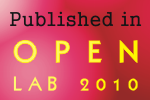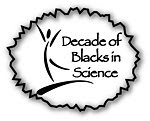I have two interesting children's science books on my shelf that are perfect for the Week of the Blue tribute to Marine & Ocean Biology.
National Geographic The Kingdom of the Blue Whale television program gave all of us land-locked regular people a chance to experience the life of marine researchers - on the sea and in the lab (or hotel room lab). Hey, scientists are clever and adaptable people. Like you, we make do with the resources we have.
So, immediately after the program, I cracked open my Ocean and Marine Wildlife Books and starting reading.
Authors: Flip and Linda Nicklin
Publisher: National Geographic
This was truly a beautiful coincidence to have a book about whales from the same organization that brought us this television special. What I enjoyed the most was how the authors come right out and talk about whale behavior. In fact, they introduce us to two Whale Behavior Biologists - Jim Darling and Jonathan Gordon. The authors, Flip and Linda Nicklin, have spent a lot of time on whale research boats and have captured some amazing photographs of whale all kinds of whales - Narwhals, Belugas, Sperm Whales, Humpbacks, Minkes, Fin Whales, and the star of the show Blue Whales. This trade book is very easy to read and a great follow-up to the television program. Like the show, it includes references to conservation issues and concerns for all whale species and offers suggestions for how each of us can make a difference.
Author Carolyn Franklin
Publisher: Children's Press of Scholastic
Like the previous title, this was also a great follow-up read to the television show. The book introduces younger readers to marine wildlife from the deep dark ocean to the sandy shores. I give the book thumbs up for being very inclusive - it describes and illustrates plankton, all kinds of squirmy wormy and wool invertebrates, fish - small, medium, large, and extra-large, the plant life and algae, cephalopods, corals,the reptiles birds and mammals, and the sessile organisms like barnacles, starfish and anemones. The book features factoids about ocean life and ecology, particularly food chain relationships among all of the sea creatures. It is also very colorful. I was distracted by it, but I bet the school kids will love it. The book even includes a True & False question about the Mightily Beloved Blue Whale - Does it eat up to 7,900 pounds of animal plankton a day? Tick, tock. After watching the special you should able to answer that. If not, you can cheat a little here.

Now, if you missed the show on Sunday, then don't despair. It airs again tomorrow, Tuesday, March 10, 7 pm central time on the National Geographic Channel.
Check it out!
























1 comment:
Thanks for the reviews. Such books would make excellent gifts for kids.
Post a Comment